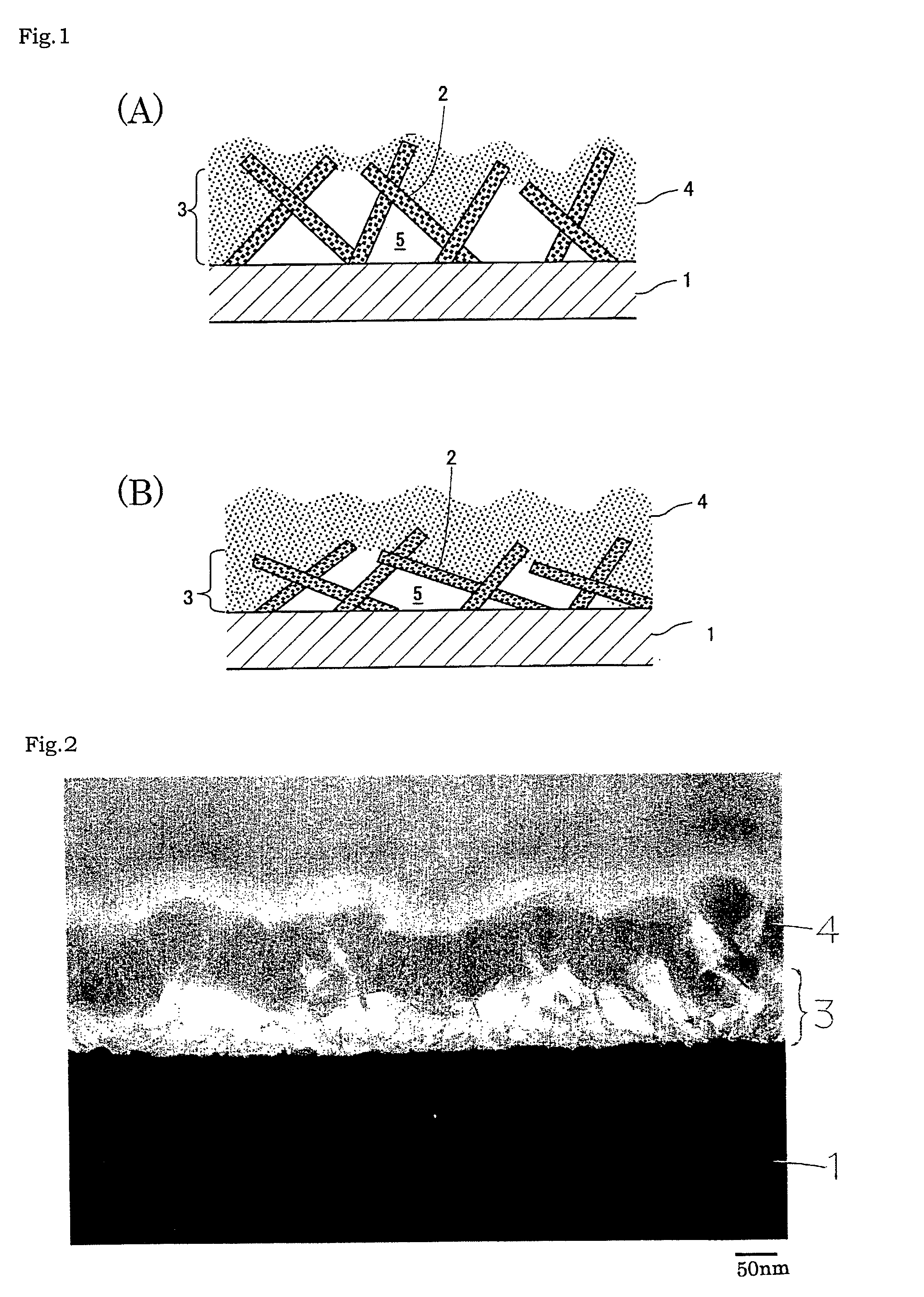Lithium secondary battery negative electrode and method for manufacturing the same
a secondary battery and negative electrode technology, applied in the direction of cell components, final product manufacturing, sustainable manufacturing/processing, etc., can solve the problems of high-speed charging/discharging, carbon nanowalls, and the upper limit of 372 mah, and achieve the effect of small battery capacity reduction and large charging/discharging capacity
- Summary
- Abstract
- Description
- Claims
- Application Information
AI Technical Summary
Benefits of technology
Problems solved by technology
Method used
Image
Examples
embodiment 1
Negative Current Collector Substrate
[0091]A disc with a side of 016 mm is punched in a 1 mm-thick stainless steel (austenitic stainless steel SUS304) sheet and the sheet is used as a negative current collector substrate.
[0092]Subsequently, the stainless steel sheet in which the disc has been punched is placed in a chamber of a plasma CVD system (see FIG. 3) and plasma CVD is performed in the following conditions. For comparison, plasma CVD is performed as well under the condition that the temperature of the current collector substrate is 600° C.
Flow gas: a gaseous mixture of hydrogen (20% by volume) and methane (80% by volume)
Flow rate of gaseous mixture: 60 sccm
Temperature of current collector substrate: 750° C.
Process pressure: 0.1 Torr (13.3 Pa)
Time: 1 hour
DC bias voltage: 0 V
Applied high-frequency output: 100 W
Applied high frequency: 13.56 MHz
Distance from the electrode to the current collector substrate: 25 mm
[0093]A chart of a Raman spectrum of the thus obtained sample and a s...
embodiment 2
[0103]In Embodiment 2, an oxygen cleaning step is performed in which the respective surfaces of the current collector substrate and the plasma CVD electrode are cleaned with oxygen under the following conditions, prior to the step of forming the carbon nanochips layer by a plasma CVD method in Embodiment 1. The other steps in Embodiment 2 are similar to the steps in Embodiment 1 in which the carbon nanochips layer is formed by a plasma CVD method under the condition that the temperature of the substrate is 750° C., and the descriptions thereof will be omitted.
Flow gas: oxygen 100%
Flow rate of gas: 60 sccm
Temperature of current collector substrate: 80° C. at lowest, 180° C. at highest
Process pressure: 0.8 Torr (100 Pa)
Time: 1 hour
Applied high-frequency output: 100 W
Applied high frequency: 13.56 MHz
PUM
 Login to View More
Login to View More Abstract
Description
Claims
Application Information
 Login to View More
Login to View More - R&D
- Intellectual Property
- Life Sciences
- Materials
- Tech Scout
- Unparalleled Data Quality
- Higher Quality Content
- 60% Fewer Hallucinations
Browse by: Latest US Patents, China's latest patents, Technical Efficacy Thesaurus, Application Domain, Technology Topic, Popular Technical Reports.
© 2025 PatSnap. All rights reserved.Legal|Privacy policy|Modern Slavery Act Transparency Statement|Sitemap|About US| Contact US: help@patsnap.com



